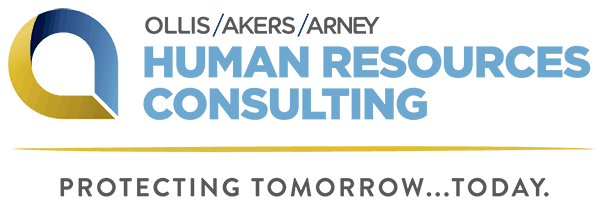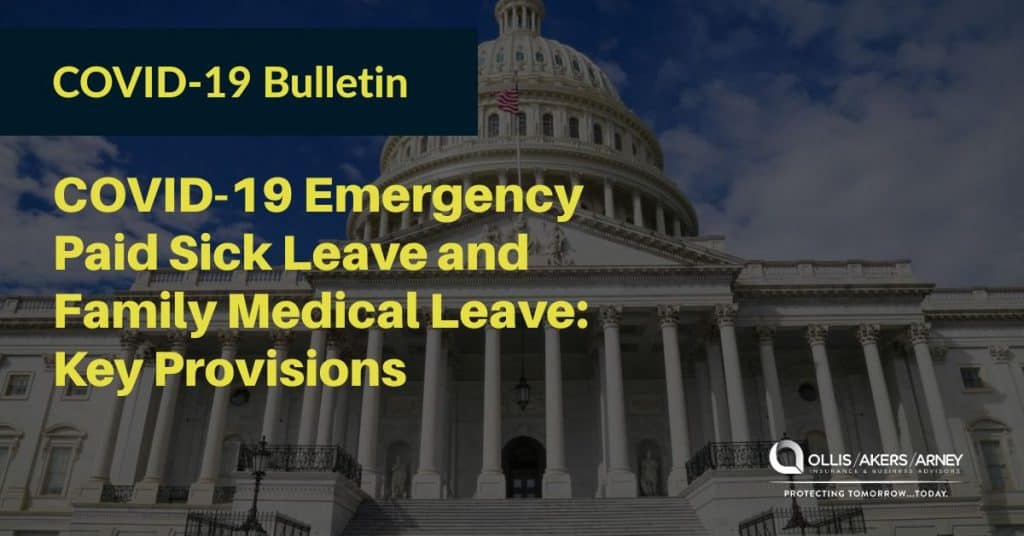On March 18, 2020, President Trump signed into law the Families First Coronavirus Response Act, which goes into effect on April 2, 2020. The new law imposes sweeping new emergency paid leave and expanded family medical leave requirements for employers nationwide. Here is a summary of the key provisions affecting employers:
EMERGENCY PAID SICK LEAVE (UP TO TWO WEEKS)
- Covered Employers: All private employers with fewer than 500 employees and all public employers. Covered Employees: All employees are eligible for emergency paid sick leave regardless of how long the employee has been with the employer. However, employers of employees who are health care providers or emergency responders may elect to exclude such employees.
- Covered Reasons: Employees are entitled to guaranteed paid leave if they are unable to work (including remote work) for any of the following reasons:
-
- The employee is caring for a minor child whose school or daycare is closed because of COVID-19;
- The employee is seeking a medical diagnosis due to COVID-19 symptoms;
- The employee has been advised by a medical provider to self-quarantine;
- The employee is subject to a government order to self-quarantine or isolate; or
- The employee is caring for an individual (not limited to family members) subject to a government order or provider’s advice to self-quarantine or isolate.
- Duration of Leave: Full-time employees are entitled to 80 hours of paid leave. Part-time employees are entitled to be paid the equivalent of the average number of hours they are scheduled to work in a two-week period. This paid leave is in addition to any existing paid sick leave already offered by the employer or required by other applicable laws.
- Maximum Leave Payments: Employees are entitled to the equivalent of their regular rate of pay (up to $511 per
day) when absent due to their own illness or quarantine and two-thirds (2/3s) their regular rate (up to $200 per
day) when absent to care for someone else. - Notice Requirement: Covered employers are required to post a notice of employee rights under the Act in
conspicuous places on the premises of the employer where notices to employees are customarily posted. The
Secretary of Labor is required to make a model notice of employee rights available within seven days, or by March
25, 2020.
EMERGENCY FAMILY MEDICAL LEAVE (UP TO 12 WEEKS, 10+ OF WHICH MUST BE PAID)
- Covered Employers: All private employers with fewer than 500 employees and all public employers. Covered Employees: All employees who have been on the payroll for at least 30 calendar days prior to seeking leave, except that employers of employees who are health care providers or emergency responders may elect to exclude such employees.
- Covered Reasons: Employees are entitled to protected leave if they are unable to work (including remote work) because they need to care for a minor child whose school or daycare is closed due to a public health emergency.
- Duration of Leave: Eligible employees are entitled to up to 12 weeks of leave, the first 10 days of which may be unpaid (although employees can request to use the emergency paid leave described above to cover these first 10 days or any other available leave).
- Maximum Leave Payments: Employees are entitled to be paid at two-thirds (2/3s) their regular pay rate for normal hours scheduled to work, up to a maximum of $200 per day.
- Job Restoration: Employers with 25 or more employees are obligated to reinstate an employee back to his/her same or an equivalent position upon return from leave. However, an employer with fewer than 25 employees is not required to reinstate an employee whose position no longer exists due to circumstances caused by the public health emergency, such as an economic downturn, so long as the employer makes reasonable attempts to return the employee to work in the same or an equivalent position for up to one year following the employee’s leave.
- Potential Exemptions: The Secretary of Labor is authorized to publish regulations excluding healthcare providers and emergency responders from the definition of “covered employer,” and to exempt businesses with fewer than 50 employees if compliance would jeopardize the viability of such businesses. It remains to be seen whether such exemptions will be enacted.
PROVISIONS APPLICABLE TO BOTH FORMS OF LEAVE
Reimbursement for Employers: Employers can claim a payroll tax credit on a quarterly basis equal to 100% of the amount of qualified emergency sick and family medical leave wages paid to employees. This tax credit is refundable in the event it exceeds the amount of payroll taxes owed by the employer. The tax credit is capped at the same wage amounts allowed under the act (i.e., $511 or $200 per day per eligible employee).
- No Retaliation: Employers are prohibited from retaliating against employees who seek to use emergency paid sick and family medical leave.
Expiration: Both the emergency paid leave and expanded family medical leave provisions expire on December 31, 2020, and no paid leave can be carried over into 2021.
FREQUENTLY ASKED QUESTIONS
1. Do these new paid leave requirements apply if a family member or other individual who ordinarily provides free childcare is unavailable for COVID-19 reasons?
No. The Act only provides for paid leave when a parent needs to miss work because a “child care provider,” meaning “a provider who receives compensation for providing child care services on a regular basis,” is closed or unavailable due to the coronavirus public health emergency.
2. Can employers force employees to take this new paid leave concurrently with existing paid time off, vacation, or sick leave benefits?
No. An employee may elect to substitute any accrued vacation, personal, medical or sick leave for the first 10 days of unpaid leave available under the emergency family medical leave provisions, but an employer cannot force the employee to do so.
3. Are eligible employees entitled to paid leave even if an employer’s entire operations are shutdown?
This remains unclear, and various legal practitioners interpret the Act’s language differently. We expect the Secretary of Labor may issue guidance on this issue. In the meantime, please consider consulting with your Spencer Fane attorney.
4. Do these new paid leave requirements apply to employees subject to collective bargaining agreements?
Yes. However, employers that are signatories to multiemployer collective bargaining agreements may fulfill their new obligations under the Act by making contributions to their multiemployer fund, plan, or program so long as the fund, plan, or program enables employees to secure the paid leave to which they are entitled under the Act.
5. Can an employer require an eligible employee to find his or her own replacement coverage as a condition of providing paid sick time?
No. The Act prohibits employers from conditioning paid sick leave on the employee having to find replacement coverage.
FINAL TAKEAWAYS
As with all other aspects of the COVID-19 pandemic response, laws are rapidly evolving. Please reach out to your Spencer Fane attorney if you have questions on how this new act affects your business or organization. Spencer Fane has also collected trusted resources on its COVID-19 Resources webpage.
This article was originally published here.






